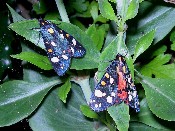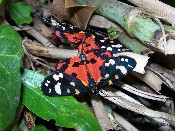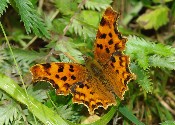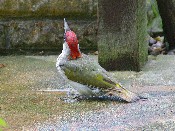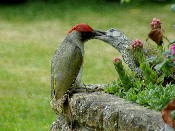 |
|
|
|
|
|
|
|
|
|
|
Local
natural history
|
|
Natural History Notes Update July 2009 Following the wet summers of 2007 and 2008, despite very varied temperatures the summer of 2009 so far has been fairly dry, as any keen gardener will tell you. A third wet summer would have been disastrous for many insects, particularly butterflies. Of the common garden species seen in the spring, Speckled Wood, Orange Tip and Green-veined White butterflies were seen in reasonable numbers, although only a few Holly Blues were seen in the village. In early spring the rookery behind houses on the east side of York Road had expanded. The noise, particularly in the evening, was tremendous. At the end of May, two White Helleborines flowered close to the edge of the bowling green in East Hagbourne. These plants are relatively common native orchids, but it was nice to see them growing successfully in such a position. They have now formed fat seed pods. Red kites and buzzards continue to be seen frequently, and yellowhammers have returned to the area beyond the end of Manor Close after an absence of two years. Another species that has returned is the corn bunting. Its ‘jangling keys’ sound is unmistakable. In June, a hobby was seen hunting swifts at the east end of the village. This is probably the only bird of prey capable of catching swifts. Due to the loss of suitable nesting sites, there are now less seen in the village, but they remain a common sight until the end of July, when they return to Africa for the autumn and winter months. At the end of May there was a large influx of Painted Lady butterflies all over the country. These originate from N. Africa and will have laid eggs all over the UK. When the imagos (adults) emerge in late summer, there should be very large numbers present in our gardens.
If you have
any comments, requests or observations concerning the flora and
fauna of the village, please get in touch with one of us, and
we will include them in the next update. |
|||||||||||||||||
